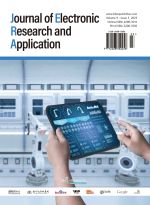Research on the Development Status and Difficulties of Machine Translation in the Era of Artificial Intelligence
Abstract
Machine translation builds a bridge for cross-language communication by realizing text conversion between different languages. However, there are still many challenges in achieving context-accurate translations. These mainly include how to accurately capture subtle information in context, effectively resolve the ambiguity of polysemous words, properly translate idiomatic expressions, accurately reflect cultural differences, and correctly use terms in specific fields. This article reviews the existing platforms and the latest research results in the field of machine translation, deeply explores the above-mentioned key difficulties, and explores the introduction of artificial intelligence technology. The aim is to improve the overall performance of machine-translation systems, facilitate smoother communication and understanding among people from different cultural backgrounds, further eliminate language barriers, and promote the in-depth integration and development of global multiculturalism.
References
Naveen P, Trojovsky P, 2024, Overview and Challenges of Machine Translation for Contextually Appropriate Translations. iScience, 27(10): 110878.
Li Z, 2024, Research on the Optimization of Neural Machine Translation Models based on the Continuous Bag-of-words Model. Automation & Instrumentation, (11): 48–52.
Lai H, Zhang Y, Guo J, et al., 2024, Context-Filter for Document-Level Neural Machine Translation. Journal of Kunming University of Science and Technology (Natural Science Edition), (06): 75–85.
Stoyanova K, Stoyanov D, Khorev V, et al., 2024, Identifying Neural-network Structures Explained by Personality Traits: Combining Unsupervised and Supervised Machine Learning Techniques in Translational Validity Assessment. The European Physical Journal Special Topics, 2024: 1–21.
Wang W, Jiao W, Huang T, et al., 2025, On the Shortcut Learning in Multilingual Neural Machine Translation. Neurocomputing, 615: 128833.
Tao Y, Tao D, 2021, Research on Machine Translation Algorithms based on DNN and Rule Learning. Computer Measurement & Control, 29(01): 150–153 + 158.
Cai X, Wen B, 2021, Statistical Analysis of Machine Translation Error Types in Chinese-to-English Translation Taking Chinese-to-English Translation of Publicity Texts as an Example. Journal of Zhejiang Sci-Tech University (Social Sciences Edition), 46(02): 162–169.
Qin W, 2020, Research on Neural Machine Translation with Incorporated Rule Knowledge, dissertation, Soochow University.
Liu X, 2020, Optimization Methods for Statistical Machine Translation Results from the Perspective of the “Skopos Theory,” dissertation, Beijing Foreign Studies University.
Ding Q, Cao H, Cao Z, et al., 2025, Dual-perspective Fusion for Word Translation Enhancement. Information Fusion, 117: 102815.
Sun H, Kong B, 2024, Sustainable Improvement and Application of Multilingual English Translation Quality Using T5 and MAML. Discover Artificial Intelligence, 4(1): 98.
Li J, Hu X, 2024, A Better or Worse Communicator? Comparing Human and Machine Translation in Source-language Shining Through Across Registers. Lingua, 312: 103834.
Sethiya N, Maurya KC, 2025, End-to-End Speech-to-Text Translation: A Survey. Computer Speech & Language, 90(C): 101751.
Han Q, 2024, Research on the Accuracy of Machine Translation in Cross-cultural Communication based on Embedded Neural Networks. International Journal of High-Speed Electronics and Systems, 2024: 2540125.
Lim WZ, Vylomova E, Kemp C, et al., 2024, Predicting Human Translation Difficulty with Neural Machine Translation. Transactions of the Association for Computational Linguistics, 12: 1479–1496.

